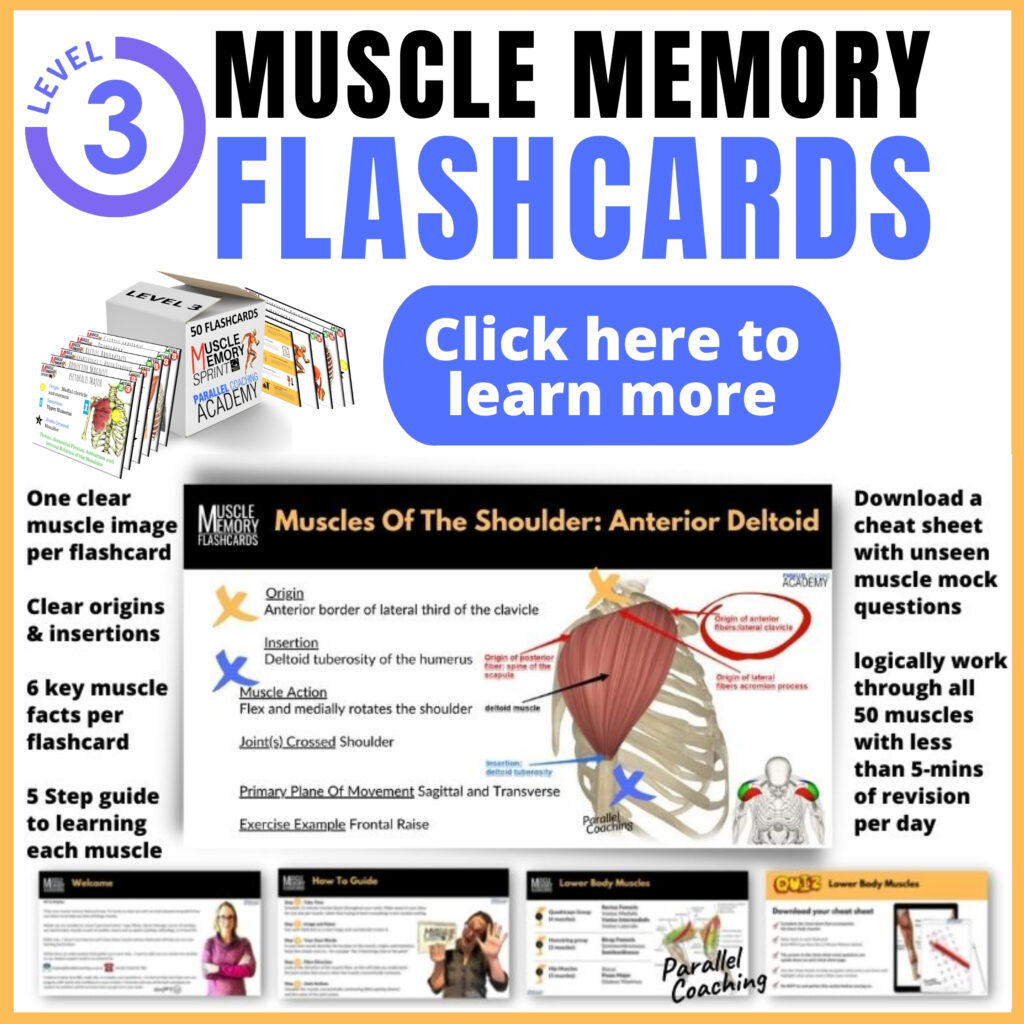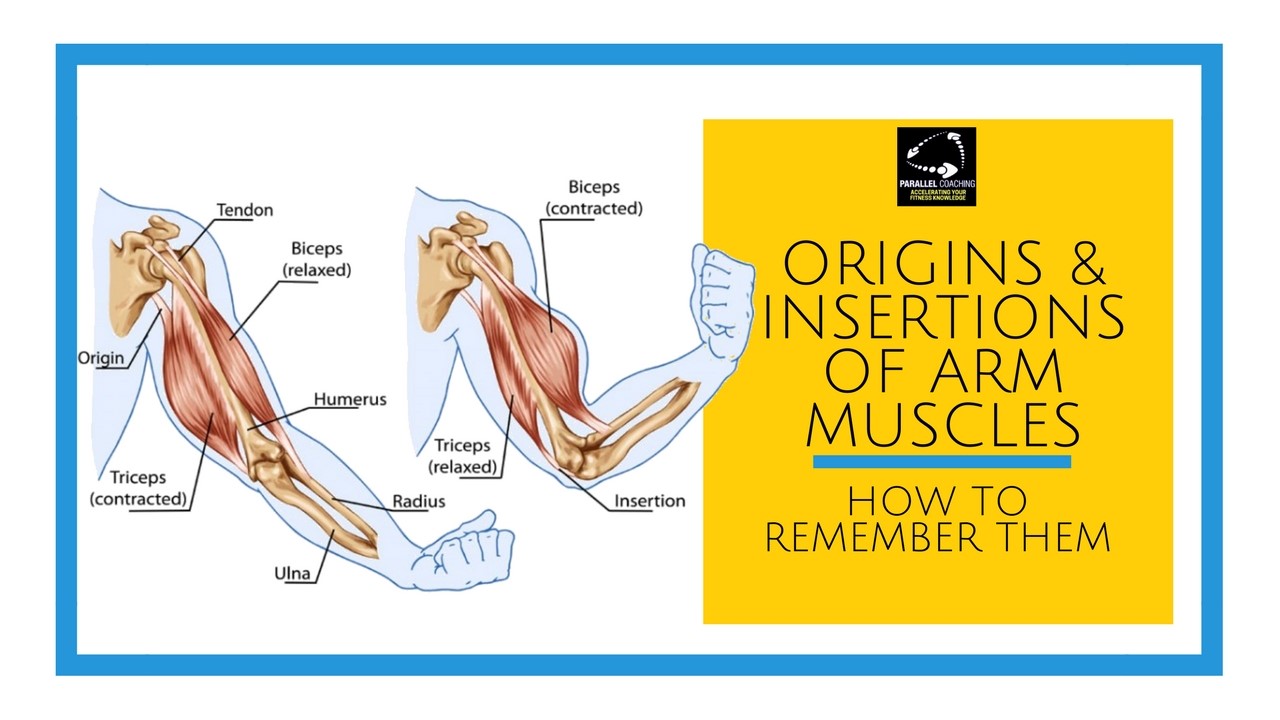In today’s video training, you’ll learn how to remember muscle origin and insertion of the arm muscles ready for your Level 2 or Level 3 Anatomy and Physiology Exam
I’ll show you exactly how to remember complex information about the Triceps Brachii and Biceps Brachii, including the origin and insertion, location, muscle action, and exercises that work the muscles. This means that you use a mix of visual and kinaesthetic learning to commit the facts to your memory and forge out a new neural pathway.
You can then use this same method of learning for all of the other muscles you need to learn for your Level 2 and Level 3 anatomy and physiology exam.
First of all, watch the 7-minute video tutorial and then test your knowledge using the three mock questions at the bottom of this blog.
Watch: Origins and Insertions of the arm muscles
The 5 steps to learn the muscles of the arm
Step 1: Brachii
Wherever you see the word Brachii, it is referring to the arm. So, it is important to break away from the gym speak and use the full name for both the biceps and triceps: Biceps Brachii and Triceps Brachii.
This will avoid confusion on exam day if presented with multiple choice answers that include the Biceps femoris (leg) and biceps brachii (arm).
Step 2: Location
You need to know that the biceps brachii is on the front of the body, and the triceps brachii is on the back of the body. This is true when you stand in an anatomical position with palms facing forwards.
Step 3: Know it in your words
Make sure you know that both muscles cross two joints (shoulder and elbow). Therefore the origins for both the triceps brachii and biceps brachii must be above the shoulder joint. The Insertion must be below the elbow. Point to the origin and insertion on your own body and learn it in your words.
Step 4: Biceps Brachii Detail
Origin: Short head = Coracoid process of the scapula. Long head = Supragelnoid tubercle of scapula
Insertion: Tuberosity of radius
Joint Action: Supinates the Forearm, Flexes the elbow and Flexes the Shoulder
Step 5: Triceps Brachii Detail
Origin: Long head = Infraglenoid Tubercle. Lateral and Medial head = Posterior Humerus.
Insertion: Olecranon Process of radiusJoint Action: Extends the elbow, Extends and Adducts the Shoulder
Test your knowledge with 3 Mock Questions
Look at the Muscle Anatomy and Physiology Mock questions below and jot down your answer on scrap paper or as a note in your phone.
Then scroll down to reveal the answers.
1) What action occurs when the muscle fibres of the Gastrocnemius concentrically contract?
A. Plantarflexion
B. Retraction
C. Dorsiflexion
D. Knee Extension
2) What is the insertion of the Gastrocnemius muscle?
A. Condyles of the Tibia
B. Calcaneus via the Longitudinal Ligament
C. Calcaneus via the Achilles Tendon
D. Condyles of the Femur
3) Which exercise does NOT work the Gastrocnemius muscle?
A. Calf Raise
B. Lateral Raise
C. Lunge
D. Walking
Answers:
Q1: Answer = A
Q2: Answer = C
Q3: Answer = B
If you want more mock questions like this, then you can download more Free Mock Questions: DOWNLOAD NOW
How to learn origins and insertions?
Learn, Revise & Remember All 50 Muscles In The Level 3 Anatomy & Physiology Exam.
(and the BEST part…You can do all this in as little as 5-minutes a day)
Each flashcard gives you a clear image and six clear muscle facts:
- Name and Location
- Origin and Insertions
- Muscle Actions
- Joints Crossed
- Primary Planes Of Movement
- Exercise Examples

Dedicated to More
Hayley “Origins and Insertions of the Arm Muscles” Bergman
Parallel Coaching
P.S. You can also find us on the following platforms:
Instagram: Follow Now
Facebook: Like Our Page
Twitter: Tweet Us
YouTube: Subscribe Here
More Muscle Revision Blogs: HERE


really pleased I found the site. very helpful video. Thank you